|
Books Should Be Free Loyal Books Free Public Domain Audiobooks & eBook Downloads |
|
|
Books Should Be Free Loyal Books Free Public Domain Audiobooks & eBook Downloads |
|
Fiction |
|---|
Book type:
Sort by:
View by:
|
By: Jane Austen (1775-1817) | |
|---|---|
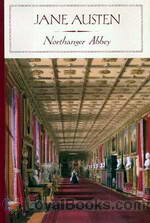 Northanger Abbey
Northanger Abbey
Jane Austen’s Northanger Abbey is a book about the life of Catherine Morland and her romantic relationships. The novel is divided into two parts; the first part begins with Catherine’s visit to Bath and her relationship with Henry Tilney and the other people she met there, and the second part starts with the arrival of Frederick Tilney and her visit to Northanger Abbey. This book alongside Pride and Prejudice and Sense and Sensibility is considered one of the major works of Jane Austen. The novel had undergone many revisions before its publication and it was even originally titled “Catherine... | |
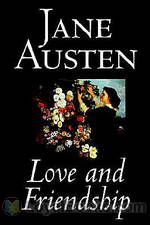 Love and Friendship
Love and Friendship
Begun when she was just eleven years old, Love and Friendship is one of Jane Austen's stories that very few readers may have encountered before. Austen experts feel that this story was written, like many others, only for the pleasure of her family and friends. It is scribbled across three notebooks, in childish handwriting, and the complete work is thought to have been written over a period of six or seven years. It is dedicated to one of her cousins, whom she was very close to, Eliza de Feuillide... | |
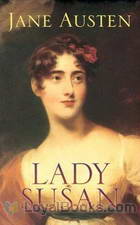 Lady Susan
Lady Susan
An epistolary novel, Lady Susan is an early work by Austen that was posthumously published in 1871. The short novel focuses on the self-serving eponymous anti-heroine, as she cunningly maneuvers her way through society in search of a wealthy husband for both her daughter and herself. Disregarding anything but her own selfish goals, Susan employs her charms to lure men and draw them into her web of deceit, no matter their age or status. Exploring issues including morals, manners, self-indulgence, malevolence, and social machinations, the relatively short novel is sure to fascinate with its atypical form... | |
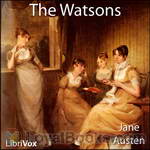 The Watsons
The Watsons
This fragment of a novel was written by Jane Austen in 1804 and remained untitled and unpublished until her nephew James Edward Austen-Leigh printed it in his A Memoir of Jane Austen in 1871. The title is from him. Mr Watson is a widowed clergyman with two sons and four daughters. The youngest daughter, Emma, has been brought up by a wealthy aunt and is consequently better educated and more refined than her sisters. But when her aunt contracts a foolish second marriage, Emma is obliged to return to her father’s house. There she is chagrined by the crude and reckless husband-hunting of two of her twenty-something sisters. | |
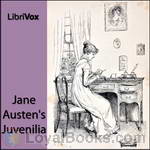 Jane Austen's Juvenilia
Jane Austen's Juvenilia
Before becoming the author of such classics as Sense and Sensibility, Pride and Prejudice, and Emma, Jane Austen experimented with various writing styles as a teenager in the early 1790s. This is a collection of her juvenilia, including the epistolary novels Love and Freindship, Lesley Castle, and Lady Susan, as well as her comic History of England and some shorter pieces. (Summary by Elizabeth Klett) | |
By: Leo Tolstoy (1828-1910) | |
|---|---|
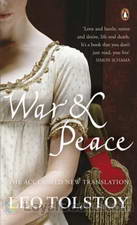 War and Peace
War and Peace
Leo Tolstoy's War and Peace chronicles the lives of five Russian aristocratic families during Napoleon's invasion of Russia. Many considered this book to be the best Russian work of literature of all time and it is massive in scale. The book is divided in four volumes and the chapters don't just contain the narrative of the plot to the novel but philosophical discussions as well. This may be intimidating to average book readers but they shouldn't be discouraged to try reading War and Peace. After all, this book was written for all and not just for intellectuals... | |
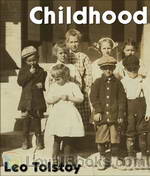 Childhood (English trans.)
Childhood (English trans.)
Childhood, published in 1852, is the first novel in Leo Tolstoy’s autobiographical trilogy, which also includes Boyhood, and Youth. Published when Tolstoy was twenty-three, the book gained immediate notice among Russian writers including Ivan Turgenev, and heralded the young Tolstoy as a major figure in Russian letters. Childhood is an expressionist exploration of the internal life of a young boy, Nikolenka, and was a new form in Russian writing, mixing fact, fiction and emotions to render the moods and reactions of the narrator. Childhood is Tolstoy’s first published work. Translated into English by C. J. Hogarth. | |
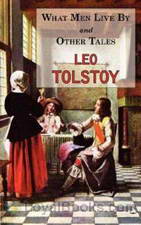 What Men Live By and Other Tales
What Men Live By and Other Tales
Although Leo Tolstoy (1828-1910) was a wealthy landowner, in his later life he had what was considered a “religious awakening.” This experience went on to inform his writing and his lifestyle in profound ways. His views transcended the specifics of religion, as known in his day – so much so he came to be a helpful guide both to Mohandas Gandhi and to Dr. Martin Luther King Jr. The four stories in this collection ask profound questions and gently supply helpful, non-dogmatic hints to their... | |
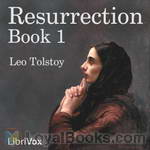 Resurrection
Resurrection
Book 1. Resurrection is the last of Tolstoy's major fiction works published in his lifetime. Tolstoy intended the novel as an exposition of injustice of man-made laws and the hypocrisy of institutionalized church. It was first published serially in the magazine Niva as an effort to raise funds for the resettlement of the Dukhobors. The story concerns a nobleman named Nekhlyudov, who seeks redemption for a sin committed years earlier. His brief affair with a maid resulted in her being fired and ending up in prostitution. The book treats his attempts to help her out of her current misery, but also focuses on his personal mental and moral struggle. | |
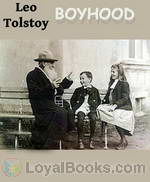 Boyhood
Boyhood
Boyhood is the second in Tolstoy's trilogy of three autobiographical novels, including Childhood and Youth, published in a literary journal during the 1850s. (Introduction by Bill Boerst) | |
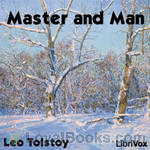 Master and Man
Master and Man
A land owner, Vasili Andreevich, takes along one of his peasants, Nikita, for a short journey to another town. He wishes to get to the town quickly ‘for business’. They find themselves in the middle of a blizzard, but the master in his avarice wishes to press on. They eventually get lost off the road and they try to camp. The master’s peasant soon finds himself about to die from hypothermia. The master leaves him on the horse to stubbornly try to find the road. When he returns, he attains a spiritual/moral revelation, and Tolstoy once again repeats one of his famous themes: that the only true happiness in life is found by living for others. (Wikipedia) | |
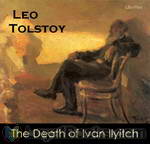 The Death of Ivan Ilyitch
The Death of Ivan Ilyitch
The Death of Ivan Ilyitch is the story of a socially ambitious middle-aged judge who contracts an unexplained and untreatable illness. As Ivan Ilyitch is forced to face the death he fears, he asks himself whether the life he thought was so correct was, in fact, a moral life after all. Written after Tolstoy's religious conversion, the novella is widely considered to be one of his masterpieces. | |
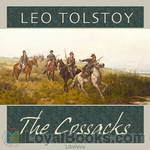 The Cossacks
The Cossacks
The Cossacks (1863) is an unfinished novel which describes the Cossack life and people through a story of Dmitri Olenin, a Russian aristocrat in love with a Cossack girl. This text was acclaimed by Ivan Bunin as one of the finest in the language. | |
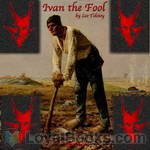 Ivan the Fool
Ivan the Fool
Written after Tolstoy suffered a spiritual crisis, Ivan the Fool is a fairy tale that offers children instruction in how to live rightly, simply, and generously. The story emphasizes the destructive aspects of materialism and militarism while idealizing manual labor and the peasant life. (Introduction by Dorlene Kaplan) | |
 Tolstoy on Shakespeare
Tolstoy on Shakespeare
This book contains a critical essay on Shakespeare by Leo Tolstoy. It is followed by another essay named "Shakespeare's attitude to the working classes" by Ernest Crosby and extracts of a letter by George Bernard Shaw. | |
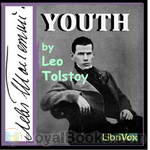 Youth
Youth
Youth is the third in Tolstoy's trilogy of three autobiographical novels, including Childhood and Boyhood, published in a literary journal during the 1850s. (Introduction by Bill Boerst) | |
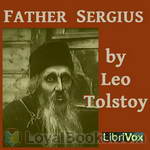 Father Sergius
Father Sergius
Prince Stepan Kasatsky experiences a disappointment with his fiancé and decides to become a monk! There is a story line, but beneath it, Father Sergius struggles to find peace and, if not happiness, then at least contentment. But he is always disillusioned and ultimately unsatisfied. Only in the end does he find his way by letting go of what he struggled to attain all his life, i.e. to be better than everyone else in whatever he did, and settle for the mundane. | |
By: Lewis Carroll (1832-1898) | |
|---|---|
 Alice's Adventures in Wonderland
Alice's Adventures in Wonderland
An acclaimed children’s classic depicting the odd, but riveting journeys of the curious Alice as she explores the surreal world of Wonderland. Written by Charles Lutwidge Dodgson or better known under his pseudonym Lewis Caroll, this episodic novel is assembled in twelve chapters each containing a prominent adventure. The departure from logic and its embracement of pure imagination is what makes Alice’s Adventures in Wonderland a model for fantasy novels and a timeless classic. The novel begins when the self-aware young Alice, who grows bored of sitting by the river with her sister, and spots a peculiar looking rabbit, dressed in a waistcoat... | |
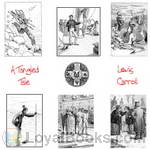 A Tangled Tale
A Tangled Tale
Lewis Carroll (1832-1896) is famous for Alice’s Adventures in Wonderland. It is less widely known that he worked as a lecturer for mathematics at Christ Church college, Oxford for 27 years. A tangled tale merges his two talents as storyteller and mathematician. It consists of ten short humorous stories which present one or more mathematical problems. The ten knots as they are called, were first published in The Monthly Packet magazine between April 1880 and March 1885, where readers were invited to solve the problems, and the solution was discussed in a later issue. | |
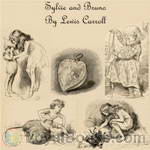 Sylvie and Bruno
Sylvie and Bruno
The novel has two main plots; one set in the real world at the time the book was published (the Victorian era), the other in the fantasy world of Fairyland. While the latter plot is a fairytale with many nonsense elements and poems, similar to Carroll’s Alice books, the story set in Victorian Britain is a social novel, with its characters discussing various concepts and aspects of religion, society, philosophy and morality. This book is the first of two volumes and the two intertwining stories are brought to a close in the second volume, Sylvie and Bruno Concluded. | |
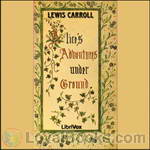 Alice's Adventures Underground
Alice's Adventures Underground
This is the handwritten book that Carroll wrote for private use before being urged to develop it later into Alice in Wonderland. It was generously illustrated by Carroll and meant to entertain his family and friends. When a sick child in a hospital enjoyed it so much, the mother wrote him saying it had distracted her for a bit from her pain and led eventually to Carroll expanding the story. The Reverend Charles Lutwidge Dodgson and the Reverend Robinson Duckworth rowed in a boat, on 4 July 1862,[12]... | |
By: Mark Twain (1835-1910) | |
|---|---|
 The Adventures of Tom Sawyer
The Adventures of Tom Sawyer
If ever there was a story written based unabashedly on adventure and trouble, this is it. There are treasure hunts and murderers on the run in this book that will keep you spellbound. Tom and his half-brother, Sid, lived with their aunt, Polly. Tom was a boisterous young fellow who constantly found himself in rather awkward situations that landed him into trouble. These situations were however exceedingly hilarious. On one occasion, Tom dirtied his clothes in a fight and his punishment was to whitewash the fence the following day... | |
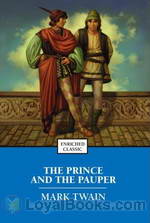 The Prince and the Pauper
The Prince and the Pauper
A poor young boy from the slums of London watches a royal procession pass, with the youthful Prince of Wales riding at its head. He ventures too close and is caught and beaten by the Prince's guards. However, the young royal stops them and invites the vagrant to the palace. Here the two boys sup alone and are stunned to discover that they bear a startling resemblance to each other. The Prince is Edward, long awaited heir of the monarch, Henry VIII, while the vagrant is Tom Canty, the son of a thief and a beggar... | |
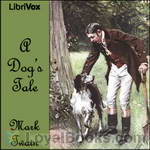 A Dog's Tale
A Dog's Tale
A sentimental short story praised for its moving plot and condemnation of scientific experimentation on animals, Mark Twain efficiently delivers a truly captivating piece. First appearing in Harper’s Magazine in 1903, A Dog's Tale was later published as a pamphlet for the National Anti-Vivisection Society. The tale focuses on the life of Aileen, a misunderstood dog who experiences the ups and downs of life, while cruelly subjected to suffering because of the shallow belief of her inferiority amidst humans... | |
 Extracts from Adam's Diary
Extracts from Adam's Diary
Get the true story of Adam and Eve, straight from the source. This humorous text is a day-to-day account of Adam’s life from happiness in the “GARDEN-OF-EDEN” to their fall from grace and the events thereafter. Learn how Eve caught the infant Cain, and Adam takes some time to learn exactly what it is. | |
 A Tramp Abroad
A Tramp Abroad
A Tramp Abroad is a work of non-fiction travel literature by American author Mark Twain, published in 1880. The book details a journey by the author, with his friend Harris (a character created for the book, and based on his closest friend, Joseph Twichell), through central and southern Europe. While the stated goal of the journey is to walk most of the way, the men find themselves using other forms of transport as they traverse the continent. The book is often thought to be an unofficial sequel to an earlier Twain travel book,The Innocents Abroad... | |
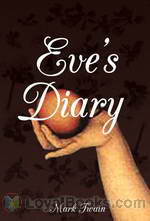 Eve's Diary
Eve's Diary
Eve's Diary is a comic short story by Mark Twain. It was first published in the 1905 Christmas issue of the magazine Harper's Bazaar, and in book format in June 1906 by Harper and Brothers publishing house. It is written in the style of a diary kept by the first woman in the Judeao-Christian creation myth, Eve, and is claimed to be "translated from the original MS." The "plot" of this novel is the first-person account of Eve from her creation up to her burial by, her mate, Adam, including meeting and getting to know Adam, and exploring the world around her, Eden... | |
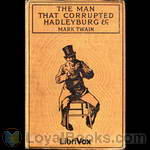 The Man That Corrupted Hadleyburg, and Other Stories
The Man That Corrupted Hadleyburg, and Other Stories
“The Man That Corrupted Hadleyburg” is a piece of short fiction by Mark Twain. It first appeared in Harper’s Monthly in December 1899, and was subsequently published by Harper Collins in the collection The Man That Corrupted Hadleyburg and Other Stories and Sketches (1900). This recording contains all the stories and sketches from the 1900 Harper Collins publication. | |
 Personal Recollections of Joan of Arc, Volumes 1 & 2
Personal Recollections of Joan of Arc, Volumes 1 & 2
Mark Twain’s work on Joan of Arc is titled in full “Personal Recollections of Joan of Arc, by the Sieur Louis de Conte.” De Conte is identified as Joan’s page and secretary. For those who’ve always wanted to “get behind” the Joan of Arc story and to better understand just what happened, Twain’s narrative makes the story personal and very accessible. The work is fictionally presented as a translation from the manuscript by Jean Francois Alden, or, in the words of the published book, “Freely Translated out of the Ancient French into Modern English from the Original Unpublished Manuscript in the National Archives of France... | |
 Tom Sawyer Abroad
Tom Sawyer Abroad
Tom Sawyer Abroad is a novel by Mark Twain published in 1894. It features Tom Sawyer and Huckleberry Finn in a parody of Jules Verne-esque adventure stories. In the story, Tom, Huck, and Jim set sail to Africa in a futuristic hot air balloon, where they survive encounters with lions, robbers, and fleas to see some of the world’s greatest wonders, including the Pyramids and the Sphinx. Like Adventures of Huckleberry Finn and Tom Sawyer, Detective, the story is told using the first-person narrative voice of Huck Finn. | |
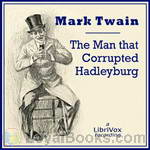 The Man That Corrupted Hadleyburg
The Man That Corrupted Hadleyburg
The town of Hadleyburg had the reputation of being the most honest town in a wide area, indeed an incorruptible community. The elders took this reputation so to heart that they brought up their children shielded from all temptation and trained thoroughly in total honesty. However, a stranger passing through the community was seriously offended by the actions of residents of this Utopia, and he vowed to gain revenge. After several years he came up with the perfect plan to embarrass the town and expose its hypocrisy. (Introduction by Leonard Wilson) | |
 Tom Sawyer, Detective
Tom Sawyer, Detective
Tom Sawyer, Detective is an 1896 novel by Mark Twain. It is a sequel to The Adventures of Tom Sawyer (1876), Adventures of Huckleberry Finn (1884), and Tom Sawyer Abroad (1894). Tom Sawyer attempts to solve a mysterious murder in this burlesque of the immensely popular detective novels of the time. Tom and Huck find themselves with Uncle Silas and his family again (see “Huck Finn”), and much of the drama ends up focusing on Uncle Silas. Like the two preceding novels, the story is told using the first-person narrative voice of Huck Finn. | |
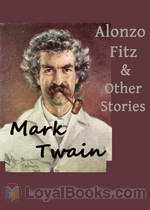 Alonso Fitz and Other Stories
Alonso Fitz and Other Stories
A collection of Twain short stories including:The Loves Of Alonzo Fitz Clarence And Rosannah EtheltonOn The Decay Of The Art Of LyingAbout Magnanimous-Incident Literature The Grateful Poodle The Benevolent Author The Grateful HusbandPunch, Brothers, PunchThe Great Revolution In PitcairnThe Canvasser's TaleAn Encounter With An InterviewerParis NotesLegend Of Sagenfeld, In GermanySpeech On The BabiesSpeech On The WeatherConcerning The American LanguageRogers | |
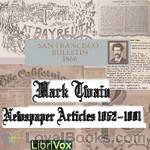 Newspaper Articles by Mark Twain
Newspaper Articles by Mark Twain
This is a collection of newspaper articles written by Samuel Clemens, for various newspapers, between 1862 and 1881. After Feb 3rd 1863, he began using the pen name Mark Twain. This compilation is the work of Project Gutenberg and contains articles from TERRITORIAL ENTERPRISE, THE SAN FRANCISCO DAILY MORNING CALL, THE SACRAMENTO DAILY UNION, DAILY HAWAIIAN HERALD, ALTA CALIFORNIA, THE CHICAGO REPUBLICAN, and THE GALAXY. (Introduction by John Greenman) | |
 Mark Twain's (Burlesque) Autobiography and First Romance
Mark Twain's (Burlesque) Autobiography and First Romance
Mark Twain's (Burlesque) Autobiography and First Romance, a short volume, published by Sheldon & Co., NY in 1871, is Mark Twain's third book. It consists of two stories - First Romance, which had originally appeared in The Express in 1870, and A Burlesque Autobiography (bearing no relationship to Twain's actual life), which first appeared in Twain's Memoranda contributions to the Galaxy. Rather, the content consists of a few short stories of fictional characters who are supposedly part of Twain's lineage... | |
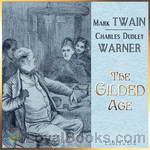 The Gilded Age, A Tale of Today
The Gilded Age, A Tale of Today
The Gilded Age: A Tale of Today is an 1873 novel by Mark Twain and Charles Dudley Warner that satirizes greed and political corruption in post-Civil War America. The term gilded age, commonly given to the era, comes from the title of this book. Twain and Warner got the name from Shakespeare's King John (1595): "To gild refined gold, to paint the lily... is wasteful and ridiculous excess." Gilding a lily, which is already beautiful and not in need of further adornment, is excessive and wasteful, characteristics of the age Twain and Warner wrote about in their novel... | |
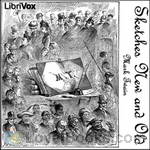 Sketches New and Old
Sketches New and Old
This collection of 63 writings by Mark Twain was published in 1875. Among other sketches, it contains “The Jumping Frog” in the original English, followed by a French translation (read here by Caroline Sophie) which Twain re-translated into English, showing how the French translation of his work was “badly flawed.” In many of these sketches, Twain shows his talent for outrageous and hilarious inventiveness, often in reaction to current events. | |
 Those Extraordinary Twins
Those Extraordinary Twins
"Those Extraordinary Twins" was published as a short story, separate and distinct from its origins inside Twain's "The Tragedy of Pudd'nhead Wilson". As Twain explains, he extricated "Twins" from "Pudd'nhead" when he found, as he was writing, that he'd created a farce inside a tragedy. This is the excised farce, a story about Italian Siamese twins who completely take over a small Missouri town, splitting it down the middle with half supporting one head and the other, the other. (Introduction by John Greenman) | |
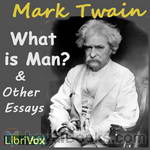 What is Man? and Other Essays
What is Man? and Other Essays
"What Is Man?", published by Mark Twain in 1906, is a dialogue between a young man and an older man jaded to the world. It involves ideas of destiny and free will, as well as of psychological egoism. The Old Man asserted that the human being is merely a machine, and nothing more. The Young Man objects, and asks him to go into particulars and furnish his reasons for his position. This collection of short stories covers a wide range of Twain's interests: the serious, the political and the ironically humorous. | |
 Fenimore Cooper's Literary Offences
Fenimore Cooper's Literary Offences
This is Mark Twain's vicious and amusing review of Fenimore Cooper's literary art. It is still read widely in academic circles. Twain's essay, Fenimore Cooper's Literary Offenses (often spelled "Offences") (1895), particularly criticized The Deerslayer and The Pathfinder. Twain wrote at the beginning of the essay: 'In one place in Deerslayer, and in the restricted space of two-thirds of a page, Cooper has scored 114 offenses against literary art out of a possible 115. It breaks the record.' Twain listed 19 rules 'governing literary art in domain of romantic fiction', 18 of which Cooper violates in The Deerslayer. (Introduction by Wikipedia and John Greenman) | |
 The Curious Republic of Gondour and Other Whimsical Sketches
The Curious Republic of Gondour and Other Whimsical Sketches
As the title reveals, these stories are a collection of some of Mark Twain's more fanciful and eccentric works. They run the gamut from political commentary to our species' need to "be remembered" somehow. Taken as a whole the stories are "whimsical". Taken individually, they speak the truth in different ways. (Introduction by John Greenman) | |
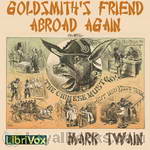 Goldsmith's Friend Abroad Again
Goldsmith's Friend Abroad Again
This satire on the U.S.A.'s myth of being the "Home of the Oppressed, where all men are free and equal", is unrelenting in its pursuit of justice through exposure. It draws a scathingly shameful portrait of how Chinese immigrants were treated in 19th century San Francisco. (Introduction by John Greenman) | |
 In Defense of Harriet Shelley
In Defense of Harriet Shelley
Mark Twain pulls no punches while exposing the "real" Percy Shelley in this scathing condemnation of Edward Dowden's "Life of Shelley". Even though, as Twain writes, "Shelley's life has the one indelible blot upon it, but is otherwise worshipfully noble and beautiful", Twain shows how Shelley's extra-marital conduct might easily be seen to have been the cause of his wife Harriet's suicide. (Introduction by John Greenman) | |
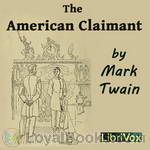 The American Claimant
The American Claimant
The American Claimant is an 1892 novel by American humorist and writer Mark Twain. The story focuses on the class differences and expectations of monarchic, hierarchical Britain and the upstart, "all men are created equal" America. Twain wrote the novel with the help of phonographic dictation, the first author (according to Twain himself) to do so. This was also (according to Twain) an attempt to write a book without mention of the weather, the first of its kind in fictitious literature. Indeed, all the weather is contained in an appendix, at the back of the book, which the reader is encouraged to turn to from time to time. | |
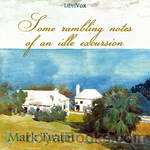 Some Rambling Notes of an Idle Excursion
Some Rambling Notes of an Idle Excursion
Written for the Atlantic magazine in 1877, this is a collection of stories about a trip Mark Twain made with some friends to Bermuda. It contains fascinating descriptions of Bermuda the island, and some of its people as well as an explanation of why Bermuda's houses are "so white". | |
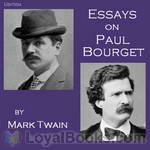 Essays on Paul Bourget
Essays on Paul Bourget
Collection of short essays concerning French novelist and critic Paul Bourget. Included: "What Paul Bourget Thinks of Us" and "A Little Note to M. Paul Bourget". | |
By: Lucy Maud Montgomery (1874-1942) | |
|---|---|
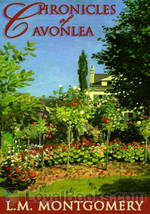 Chronicles of Avonlea
Chronicles of Avonlea
A collection of short stories first published in 1912, the book focuses on events occurring in the popular fictional village of Avonlea, which is notorious as the hometown of Anne Shirley. Comprised of 12 short stories, the Chronicles of Avonlea present a different view of the town, with the introduction of many new gripping characters, which prove to be just as endearing as their most renowned resident. Tales of everyday snippets of life proving to be humorous, identifiable, and heartwarming, the collection is an effective reinvigoration to the classic setting... | |
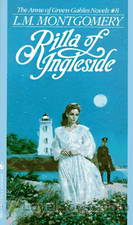 Rilla of Ingleside
Rilla of Ingleside
Rilla of Ingleside is the eighth book in the Anne of Green Gables series and focuses on the inspiring journey of Rilla Blythe, the youngest daughter of Anne and Gilbert, as she transforms from a carefree young girl into an enduring young woman swept into the chaos of war. Written from a female perspective, Montgomery accurately depicts a time in history, as she provides a contemporaneous account of the war and serves up the most emotional book in the series. Set during the First World War, the novel explores themes of coming of age, love, separation, and most importantly women’s roles during the war... | |
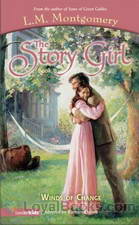 The Story Girl
The Story Girl
Revealed to be a personal favorite by Montgomery herself, The Story Girl follows the lives of a group of young children as they experience a summer of charming and realistically clumsy adventures. Published in 1911, the novel explores themes of childhood innocence and its transience, while highlighting the value of intangible things which prove to be the very essence of life. The novel begins when the young narrator Beverly King and his brother Felix are sent to stay with their Aunt Janet and Uncle Alec at their country estate over the summer, while their widowed father is away on business abroad... | |
 The Golden Road
The Golden Road
In the sequal to The Story Girl Sara Stanley returns to join the King children in publishing their own local magazine to entertain the town of Carlisle. | |
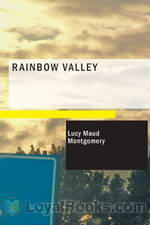 Rainbow Valley
Rainbow Valley
If you've read and loved Anne of Green Gables, you'd definitely like to add Rainbow Valley by Lucy Maud Montgomery to your collection. Published in 1919, it is the seventh book in the series and follows the further life and adventures of Anne Shirley. At Ingleside, Anne is now happily married to her childhood friend the devoted Gilbert Blythe and have now been together blissfully for fifteen years. They have six children. The book opens with the return of Anne and Gilbert (who is now a brilliant doctor) from a sojourn in London, where they had gone to attend a big medical congress... | |
 Lucy Maud Montgomery Short Stories, 1896 to 1901
Lucy Maud Montgomery Short Stories, 1896 to 1901
Stories from 1896 to 1901. Lucy Maud Montgomery was born at Clifton (now New London), Prince Edward Island, Canada, on November 30, 1874. She achieved international fame in her lifetime, putting Prince Edward Island and Canada on the world literary map. Best known for her "Anne of Green Gables" books, she was also a prolific writer of short stories and poetry. She published some 500 short stories and poems and twenty novels before her death in 1942. | |
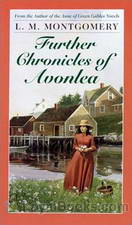 Further Chronicles of Avonlea
Further Chronicles of Avonlea
Further Chronicles of Avonlea is a collection of short stories by L.M. Montgomery and is a sequel to Chronicles of Avonlea. Published in 1920, it includes a number of stories relating to the inhabitants of the fictional Canadian village of Avonlea and its region, located on Prince Edward Island. The book was published without the permission of L.M. Montgomery, and was formed from stories she had decided not to publish in the earlier Chronicles of Avonlea. Montgomery sued her publishers, L.C. Page & Co, and won $18,000 in damages after a legal battle lasting nearly nine years. | |
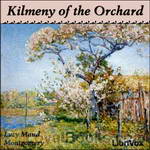 Kilmeny of the Orchard
Kilmeny of the Orchard
Eric Marshall is all that a well brought-up young man should be. Handsome, steadfast, and full of ambition, he is expected to expand the Marshall & Company empire — and to marry a woman suitable to replace his mother in Nova Scotia’s finest circles. When a sick friend asks for a favour, becoming a substitute schoolmaster in the Prince Edward Island countryside seems the perfect post-graduation lark. But when Eric wanders into an old orchard at twilight, his life will be changed forever… | |
By: William Shakespeare (1564-1616) | |
|---|---|
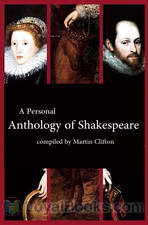 A Personal Anthology of Shakespeare, compiled by Martin Clifton
A Personal Anthology of Shakespeare, compiled by Martin Clifton
This personal anthology is my choice of speeches from Shakespeare that I enjoy reading (that I would like to have had by heart years ago!) and that seem to me to illustrate his unsurpassed use of language. He was a man who seemed to know everything about human nature and as Orson Welles said ‘he speaks to everyone and we all claim him’. I know that it has been said that ‘it is impossible to be a great Shakespearian actor without an idiosyncratic and extraordinary voice’ and this may be so, but that does not preclude ordinary mortals from reading, hearing and enjoying Shakespeare. | |
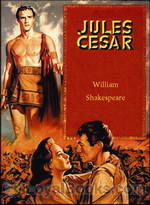 Julius Caesar
Julius Caesar
Though it's titled The Tragedy of Julius Caesar, the man himself appears only in five scenes in the entire play! However, such is his impact on the events that surrounded him that he still remains the central figure in this psychological drama that combines politics, honor, assassination, betrayal, the lust for power, patriotism and friendship. Set in 44 BC in ancient Rome, it is one of William Shakespeare's early Tragedies. First thought to have been performed in September 1599, William Shakespeare's original text or script have long vanished... | |
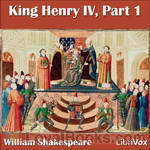 King Henry IV
King Henry IV
King Henry IV, Part 1 is the second of Shakespeare’s eight Wars of the Roses history plays, with events following those of King Richard II. As the play opens, King Henry IV (formerly Henry Bolingbroke) and Henry Percy (Hotspur) argue over the disposition of prisoners from the Battle of Holmedon. The King’s attitude toward Mortimer and the Percy family prompts them to plot rebellion. In the meantime, his son Prince Hal is living the low life in the company of Sir John Falstaff. As the time of battle nears, Prince Hal joins his father and is given a high command... | |
 Antony and Cleopatra
Antony and Cleopatra
Antony and Cleopatra is a tragedy by William Shakespeare, believed to have been written sometime between 1603 and 1607. It was first printed in the First Folio of 1623. The plot is based on Thomas North's translation of Plutarch's Life of Marcus Antonius and follows the relationship between Cleopatra and Mark Antony from the time of the Parthian War to Cleopatra's suicide. The major antagonist is Octavius Caesar, one of Antony's fellow triumviri and the future first emperor of Rome. The tragedy is a Roman play characterized by swift, panoramic shifts in geographical locations and in registers, alternating between sensual, imaginative Alexandria and the more pragmatic, austere Rome. | |
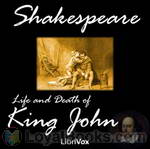 King John
King John
The Life and Death of King John, a history play by William Shakespeare, dramatises the reign of John, King of England (ruled 1199–1216), son of Henry II of England and Eleanor of Aquitaine and father of Henry III of England. It is believed to have been written in the mid-1590s but was not published until it appeared in the First Folio in 1623. John (24 December 1166 – 19 October 1216), also known as John Lackland or Softsword, was King of England from 6 April 1199 until his death. His reign... | |
By: Charles Dickens | |
|---|---|
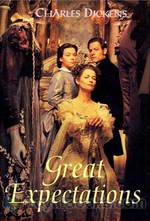 Great Expectations
Great Expectations
From the opening passage itself of Great Expectations by Charles Dickens, the reader is drawn into the world of the hero, Pip, who is at that time, seven years old. The author creates an unforgettable atmosphere: the gloom of the graveyard, the melancholy of the orphan boy, the mists rising over the marshes and the terrifying appearance of an escaped convict in chains. Told in first person (one of the only two books that Dickens used this form for, the other being David Copperfield) Great Expectations is a classic coming of age novel, in which we trace the growth and evolution of Pip or Philip Pirrip to give his full name... | |
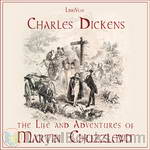 The Life and Adventures of Martin Chuzzlewit
The Life and Adventures of Martin Chuzzlewit
Dickens thought it was “in a hundred points, immeasurably the best” of his stories. Yet it was also one of his greatest flops. Compared to his other novels, The Life and Adventures of Martin Chuzzlewit was a dismal failure in terms of sales and the main reason for Dickens falling out with his long term publisher Chapman & Hall. They invoked a penalty clause and demanded that he pay back a portion of the advance which he refused. Martin Chuzzlewit was also dimly received in Dickens friendly America... | |
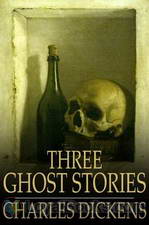 Three Ghost Stories
Three Ghost Stories
As a gifted writer with a strong interest in supernatural phenomena, Charles Dickens produced a string of ghost stories with enduring charm. Three of them are presented here, of which The Signal Man is one of the best known. Though quite different from his most celebrated realistic and humorous critical novels, these ghost stories, Gothic and grotesque as they are, are of good portrayal, and worth a read/listen. Summary by Vivian Chan | |
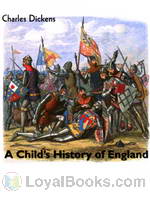 A Child's History of England
A Child's History of England
A Child’s History of England first appeared in serial form, running from January 25, 1851 to December 10, 1853 and was first published in three volume book form in 1852, 1853, and 1854. Dickens dedicated the book to “My own dear children, whom I hope it may help, bye and bye, to read with interest larger and better books on the same subject”. The history covered the period between 50 BC and 1689, ending with a chapter summarising events from then until the ascension of Queen Victoria. | |
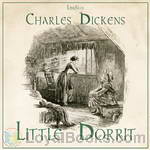 Little Dorrit
Little Dorrit
Originally published in monthly installments between 1855 and 1857, the novel focuses on the various forms of imprisonment, both physical and psychological, while also concentrating on dysfunctional family ties. Accordingly, Dickens avidly criticizes the social deficiencies of the time including injustice, social hypocrisy, the austerity of the Marshalsea debtors’ prison, and bureaucratic inefficiency. The novel kicks off with the introduction of William Dorrit, the oldest prisoner in the Marshalsea prison, who is also referred to as The Father of the Marshalsea... | |
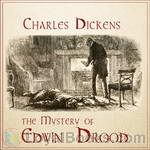 The Mystery of Edwin Drood
The Mystery of Edwin Drood
The Mystery of Edwin Drood is the final novel by Charles Dickens. It is a mystery indeed; the serial novel was just half completed at the time of Dickens’ death – leading to much speculation how it might have ended.The novel is named after Edwin Drood, one of the characters, but it mostly tells the story of his uncle, a choirmaster named John Jasper, who is in love with his pupil, Rosa Bud. Miss Bud is Drood’s fiancée, and has also caught the eye of the high-spirited and hot-tempered Neville Landless! Landless comes from Ceylon with his twin sister, Helena... | |
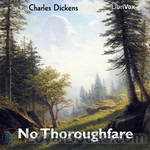 No Thoroughfare
No Thoroughfare
Two boys from the Foundling Hospital are given the same name, with disastrous consequences in adulthood. Two associates, wishing to right the wrong, are commissioned to find a missing heir. Their quest takes them from fungous wine cellars in the City of London to the sunshine of the Mediterranean — across the Alps in winter. Danger and treachery would prevail were it not for the courage of the heroine and the faithful company servant. The story contains crafted descriptions, well-drawn and diverse... | |
 A House to Let
A House to Let
A House to Let is a novella originally published in 1858 in the Christmas edition of Dickens’ Household Words magazine. Each of the contributors wrote a chapter (stories within a story, and in the case of Adelaide Anne Procter, as a story in verse) and the whole was edited by Dickens. The plot concerns an elderly woman, Sophonisba, who notices signs of life in a supposedly empty dilapidated house (the eponymous “House to Let”) opposite her own, and employs the efforts of an elderly admirer, Jabez Jarber, and her servant, Trottle, to discover what is happening within. | |
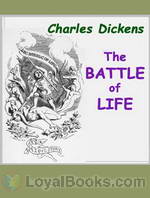 The Battle of Life
The Battle of Life
While "The Battle of Life" is one of Charles Dickens' Christmas Books - his annual release of a story just before Christmas - this one breaks the tradition by not being concerned with Christmas. Rather, its subtitle, "A Love Story", reveals more of the plot. The major events of this book take place on land that once was a battleground. That is just a backdrop for Dickens' idea of the real battle of life - finding and winning the right partner, so that life will go on to the next generation. The family that lives there is rather confused in its affections and intentions regarding who should end up with whom... | |
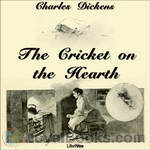 The Cricket on the Hearth
The Cricket on the Hearth
The tale of John Peerybingle, the good-hearted carrier, and his young wife Mary ('Dot'), interwoven with the story of poor toymaker Caleb Plummer, his beloved blind daughter Bertha, and the harsh old toy merchant Tackleton, who is due to marry May Fielding, a childhood friend of Dot. Comic relief is provided by Tilly Slowboy, the disaster-prone nursemaid of John and Dot's baby, and Boxer, the family dog.The cricket who chirps on the family hearth assumes fairy form to save the day when disaster looms in the form of a mysterious stranger... | |
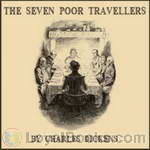 The Seven Poor Travellers
The Seven Poor Travellers
One of Dickens’ Christmas stories, this was first published as part of the Christmas number of Household Words for 1854. The first chapter relates Dickens’ visit to the ancient Richard Watts’s Charity at Rochester. The second chapter is the touching story of “Richard Doubledick”, which Dickens supposedly told the travellers, and Dickens’ journey home on Christmas morning provides the short concluding chapter. | |
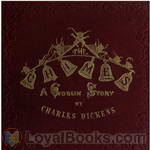 The Chimes
The Chimes
The Chimes: A Goblin Story of Some Bells that Rang an Old Year Out and a New Year In is the second of Charles Dickens' Christmas books, published in 1844. Its contemporary setting is the "Hungry Forties", a time of social and political unrest, and the book has a strong moral message. It remained popular for many years, although its fame has since been eclipsed by that of A Christmas Carol, the first of the series. Our hero Toby ("Trotty") Veck is a poor but hard-working man, whose beloved daughter Meg is due to marry on New Year's Day... | |
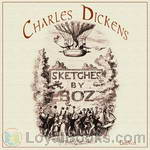 Sketches by Boz: Illustrative of Every-Day Life and Every-Day People
Sketches by Boz: Illustrative of Every-Day Life and Every-Day People
"Sketches by "Boz," Illustrative of Every-day Life and Every-day People (commonly known as Sketches by Boz) is a collection of short pieces published by Charles Dickens in 1836 accompanied by illustrations by George Cruikshank. The 56 sketches concern London scenes and people and are divided into four sections: "Our Parish", "Scenes", "Characters", and "Tales". The material in the first three of these sections is non-fiction. The last section comprises fictional stories. Originally, the sketches were published in various newspapers and periodicals from 1833-1836." | |
 The Haunted Man and the Ghost's Bargain
The Haunted Man and the Ghost's Bargain
The Haunted Man and the Ghost’s Bargain, A Fancy for Christmas-Time, (better known as The Haunted Man and the Ghost’s Bargain) is a novella by Charles Dickens first published in 1848. It is the fifth and last of Dickens' Christmas novellas. The story is more about the spirit of the holidays than about the holidays themselves, harking back to the first of the series, A Christmas Carol. The tale centers around a Professor Redlaw and those close to him. | |
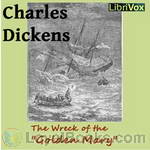 The Wreck of the Golden Mary
The Wreck of the Golden Mary
A short story of a ship wreck in 1851 trying to round Cape Horn on its way to the California gold fields. Poignant and well written. ( | |
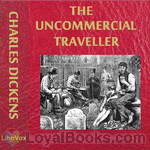 The Uncommercial Traveller
The Uncommercial Traveller
The Uncommercial Traveller is a collection of literary sketches and reminiscences written by Charles Dickens. In 1859 Dickens founded a new journal called All the Year Round and the Uncommercial Traveller articles would be among his main contributions. He seems to have chosen the title and persona of the Uncommercial Traveller as a result of a speech he gave on the 22 December 1859 to the Commercial Travellers' School London in his role as honorary chairman and treasurer. The persona sits well with a writer who liked to travel, not only as a tourist, but also to research and report what he found; visiting Europe, America and giving book readings throughout Britain... | |
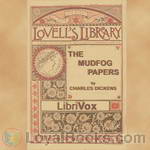 Mudfog and Other Sketches
Mudfog and Other Sketches
The Mudfog Papers was written by Victorian era novelist Charles Dickens and published from 1837–38 in the monthly literary serial Bentley's Miscellany, which he then edited. They were first published as a book as 'The Mudfog Papers and Other Sketches. The Mudfog Papers relates the proceedings of the fictional 'The Mudfog Society for the Advancement of Everything', a Pickwickian parody of the British Association for the Advancement of Science founded in York in 1831, one of the numerous Victorian learned societies dedicated to the advancement of Science... | |
By: Sir Arthur Conan Doyle (1859-1930) | |
|---|---|
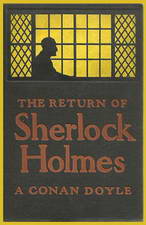 The Return of Sherlock Holmes
The Return of Sherlock Holmes
A young gambler is found shot dead in a closed room. Dr. Watson, who still mourns the disappearance of his famous friend is intrigued enough to step out of his house and take a look at the crime scene. A crowd has gathered there, curiously gazing up at the room where the crime is supposed to have taken place. Watson inadvertently jostles against an elderly, deformed man and knocks a stack of books from the fellow's hand. The man curses Watson vilely and disappears into the throng. It suddenly occurs to Watson that one of the books that he had helped the stranger pick up had seemed familiar... | |
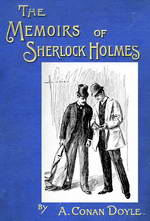 The Memoirs of Sherlock Holmes
The Memoirs of Sherlock Holmes
For more than a century and a quarter, fans of detective fiction have enjoyed the doings of the iconic sleuth, Mr. Sherlock Holmes. In the company of his faithful companion, Dr Watson, Holmes has consistently delighted generations of readers. Created by a Scottish writer and physician, Sir Arthur Conan Doyle, this immortal private eye has solved cases for kings and commoners, lovely damsels and little old ladies, engineers and country squires and a legion of others who come to him in distress and perplexity... | |
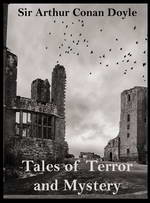 Tales of Terror and Mystery
Tales of Terror and Mystery
Though Sir Arthur Conan Doyle is best known for his detective stories, he also wrote other short stories which are masterpieces of mystery and suspense. In some of the stories in “Tales of Terror and Mystery”, a suppressed uneasiness gradually builds up and evolves into sheer terror. In others, the story line unexpectedly changes and comes to a horrific conclusion. Sit back in the comfort of your armchair and let yourself be transported to the strange but compelling world created by Sir Arthur Conan Doyle. | |
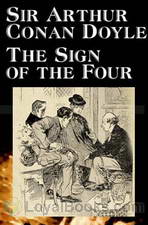 The Sign of the Four
The Sign of the Four
A secret shared by four convicts and two prison guards, a daughter in search of her missing father, a strange gift of a single pearl received every year, a fabulous treasure buried in the ancient Agra Fort in India, an eccentric detective being consulted to solve a deadly puzzle. All these events are set against the turbulent backdrop of the Great Indian Mutiny of 1857 in the second Sherlock Holmes novel by Sir Arthur Conan Doyle, The Sign of the Four. Mary Morstan, a lovely young woman, comes to the Baker Street lodgings shared by Holmes and Dr Watson... | |
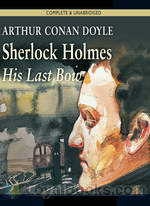 His Last Bow
His Last Bow
The disappearance of a German spy and the gathering storm that foretells the prelude to World War I is what greets you in this riveting book. The further you read the more mysteries unfold like secret submarine plans with some pages missing found in the hands of a corpse. There's also family insanity in Cornwall, a dead Spaniard and mafia hiding in an empty London flat. His Last Bow was published in the Strand Magazine circa 1908 and included several other short stories as well. Even during Sir Arthur Conan Doyle's own lifetime, Holmes had acquired cult status... | |
 The Valley of Fear
The Valley of Fear
Doyle's final novel featuring the beloved sleuth, Sherlock Holmes, brings the detective and his friend to a country manor where they are preceded by either a murder or a suicide. A secretive organization lies culprit and an infiltration of it is in order. | |
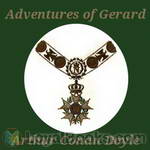 The Adventures of Gerard
The Adventures of Gerard
These lesser known stories were penned by Conan Doyle during the period between killing off Sherlock Holmes in 1893 and reluctantly resurrecting him some ten years later. The swashbuckling, eponymous hero, Etienne Gerard, is one of Napoleon's gallant French Hussars, who considers himself the finest of them all. Through these "Boys Own Adventures", Conan Doyle pokes gentle fun at both the French and the English. This is the second volume containing eight adventures. | |
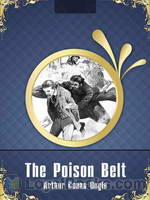 The Poison Belt
The Poison Belt
Three years after the events that took place in The Lost World, Professor Challenger urgently summons his fellow explorers (Professor Summerlee, Lord John Roxton, and reporter E.D. Malone) to a meeting. Oddly, he requires each to bring an oxygen cylinder with him. What he soon informs them is that from astronomical data and just-received telegraphs of strange accidents on the other side of the world, he has deduced that the Earth is starting to move through a region of space containing something poisonous to humankind... | |
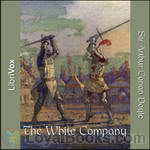 The White Company
The White Company
Set during the Hundred Years’ War with France, The White Company tells the story of a young Saxon man who is learning what it is to be a knight. Raised by Cistercian Monks and rejected by a violent elder brother, Alleyn Edricson takes service with one of the foremost knights in the country. When Alleyn falls in love with the knight’s daughter, he must prove himself to be a courageous and honourable knight before he can win her hand. Alleyn and his friends set forth with the other men-at-arms to join Prince Edward in Bordeaux, from where they will take part in the Prince’s campaign into Spain... | |
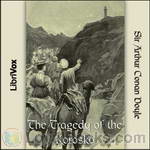 The Tragedy of the Korosko
The Tragedy of the Korosko
| |
 The Great Shadow
The Great Shadow
Set in an English-Scottish border village during the waning days of the Napoleonic era, this adventure story introduces us to Jock Calder, whose quiet way of life is shattered when a mysterious stranger steps ashore near his home. The stranger changes forever the lives of Jock, his cousin Edie, and his best friend Jim, sending the young men into the jaws of the final battle to defeat The Great Shadow that threatens to devour the whole of Europe. Don't look for Sherlock Holmes in this well-written tale, but do expect a wonderful glimpse of life at the end of the Napoleonic era, including an exciting rendition of The Battle of Waterloo. (Introduction by Christine Dufour) | |
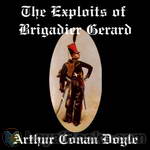 The Exploits of Brigadier Gerard
The Exploits of Brigadier Gerard
The hero, Etienne Gerard, is a Hussar in the French Army during the Napoleonic Wars. Gerard's most notable attribute is his vanity - he is utterly convinced that he is the bravest soldier, greatest swordsman, accomplished horseman and gallant lover in all France. Gerard is not entirely wrong since he displays notable bravery on many occasions, but his self-satisfaction undercuts this quite often. Obsessed with honour and glory, he is always ready with a stirring speech or a gallant remark to a lady. | |
By: Aesop (620 BC - 563 BC) | |
|---|---|
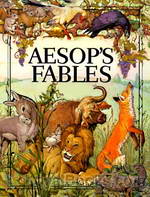 Aesop's Fables
Aesop's Fables
As children, our first experience of the magic of talking animals, the conflict between good and evil, the battle of wits between the cunning and the innocent most probably came from Aesop's Fables. These delightful, pithy and brief narratives are simple, easy to understand and convey their message in a memorable and charming fashion. Aesop's Fables by Aesop consists of about 600 tales, some well-loved and familiar, others less known but just as entertaining and educative and help us map the perimeters of our moral universe... | |
 The Aesop for Children
The Aesop for Children
THE AESOP FOR CHILDRENTHE WOLF AND THE KIDThere was once a little Kid whose growing horns made him think he was a grown-up Billy Goat and able to take care of himself. So one evening when the flock started home from the pasture and his mother called, the Kid paid no heed and kept right on nibbling the tender grass. A little later when he lifted his head, the flock was gone. He was all alone. The sun was sinking. Long shadows came creeping over the ground. A chilly little wind came creeping with them making scary noises in the grass... | |
By: Jules Verne (1828-1905) | |
|---|---|
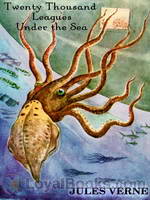 Twenty Thousand Leagues Under the Sea
Twenty Thousand Leagues Under the Sea
An early science fiction novel written by the second most translated author, French writer Jules Verne, the classic tale depicts an incredible sea expedition on board a state-of-the-art submarine. First published in 1870 and a part of the Voyages Extraordinaires series, the novel is regarded as one of the most thrilling adventure stories and one of Verne’s greatest pieces of work. Immersed in themes of exploration, avant-garde technology, and man’s insatiable desire for knowledge and scientific progression, Twenty Thousand Leagues Under the Sea has been an influence for many writers as well as an inspiration for numerous film adaptations... | |
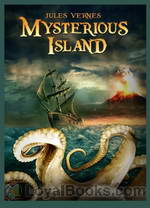 The Mysterious Island
The Mysterious Island
The Mysterious Island is another exquisite novel written by the master of adventure writing, Jules Verne. The novel has been seen as the sequel to two other famous novels written by the same author: Twenty Thousand Leagues Under the Sea and In Search of the Castaway. The story revolves around five Americans who live in a dark and harsh environment as prisoners of the American Civil War. Depleted by famine and death all around them, the five war prisoners take a big risk and escape by hijacking a hot air balloon... | |
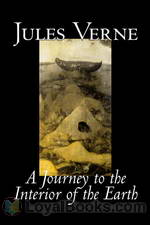 A Journey to the Interior of the Earth
A Journey to the Interior of the Earth
A historical manuscript penned by a medieval Norse poet. A mysterious code. Three intrepid explorers. A subterranean world filled with prehistoric creatures and proto-humans. These are some of the brilliant ideas that are superbly blended in A Journey to the Interior of the Earth by Jules Verne. Jules Verne, the French writer who created several works of science fiction, adventure stories and very popular novels, wrote A Journey to the Interior of the Earth in 1864. Some of his other books explore different aspects of geography, space and time travel... | |
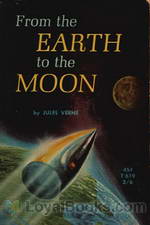 From the Earth to the Moon
From the Earth to the Moon
One of the earliest examples of literature written in the science fiction genre, From the Earth to the Moon is a part of the Voyages Extraordinaires series by French novelist Jules Verne. Written more than a century before the Apollo mission, Verne’s classic is somewhat a prophetic novel of man’s travel to the moon with its thorough and descriptive detail. A remarkable blend of action, humor, science, and audacious schemes, the timeless classic is sure to fascinate with its unique vision of lunar exploration... | |
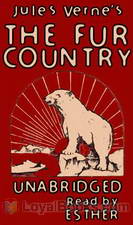 The Fur Country
The Fur Country
The Hudson's Bay Company is one of the earliest corporations in the world and the oldest commercial organization in North America. It began as a fur trading company in 1670 and today owns a variety of retail corporations selling a diverse range of goods. In The Fur Country by Jules Verne, the plot describes how a team of Hudson's Bay Company members travel through the Northwest Territory of Canada with the aim of establishing a mission on the Arctic Circle. The members are a mixed bunch. One of the ladies, Paulina Barnett, seeks adventure, while a meteorologist Thomas Black hopes to view a spectacular solar eclipse scheduled to occur during their travel... | |
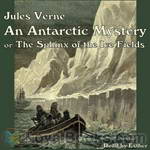 An Antarctic Mystery or The Sphinx of the Ice Fields
An Antarctic Mystery or The Sphinx of the Ice Fields
A wonderful coming together of two writers who wrote their books more than half a century apart. Neither of them had ever visited the remote islands they were writing about yet they provided inspiration for a couple of exciting adventure tales. In 1838, Edgar Allan Poe published The Narrative of Arthur Gordon Pym of Nantucket. It was the only complete novel published by the American author. It was the story of a young boy who stows away on board a whaling ship and it goes on to relate the events that follow... | |
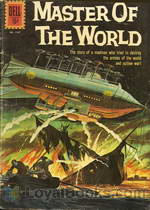 The Master of the World
The Master of the World
Published in 1904, The Master of the World is the penultimate novel in the Voyages Extraordinaires series, by renowned French novelist and pioneer of science fiction, Jules Verne. The novel acts as a sequel to Verne’s novel Robur the Conqueror, and consequently brings back some of its most notable characters, including the brilliant, yet villainous inventor Robur. Set in the summer of 1903, the adventure kicks off when a string of enigmatic events have been reported in the western part of North Carolina, leaving residents in fear of a possible volcanic eruption, even though the Blue Ridge Mountains are known to be non-volcanic ... | |
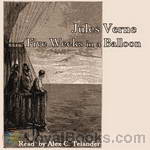 Five Weeks in a Balloon
Five Weeks in a Balloon
First published in 1863, Five Weeks in a Balloon depicts an insightful journey undertaken by a group of intrepid explorers into the partly uncharted African continent, as they aim to explore its exotic wonders. Apart from concentrating on themes including exploration, loyalty, friendship, determination, and honor, the novel also offers an endearing set of jovial characters and vivid imagery. Furthermore, the novel is the first book in Verne’s distinguished Voyages Extraordinaires series. The adventure begins when Dr... | |
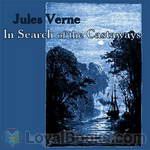 In Search of the Castaways
In Search of the Castaways
The book tells the story of the quest for Captain Grant of the Britannia. After finding a bottle cast into the ocean by the captain himself after the Britannia is shipwrecked, Lord and Lady Glenarvan of Scotland decide to launch a rescue expedition. The main difficulty is that the coordinates of the wreckage are mostly erased, and only the latitude (37 degrees) is known.Lord Glenarvan makes it his quest to find Grant; together with his wife, Grant’s children and the crew of his yacht the Duncan they set off for South America... | |
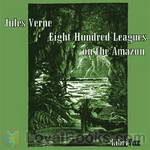 Eight Hundred Leagues on the Amazon
Eight Hundred Leagues on the Amazon
First published in 1881, Eight Hundred Leagues on the Amazon is an adventure novel in two parts by Jules Verne, having a basis in codes and cryptography. Unlike many of his other stories, it is not a work of science fiction. Rather, it describes a voyage down the Amazon River on a large raft, or jangada). Many aspects of the raft, scenery, and journey are described in detail. | |